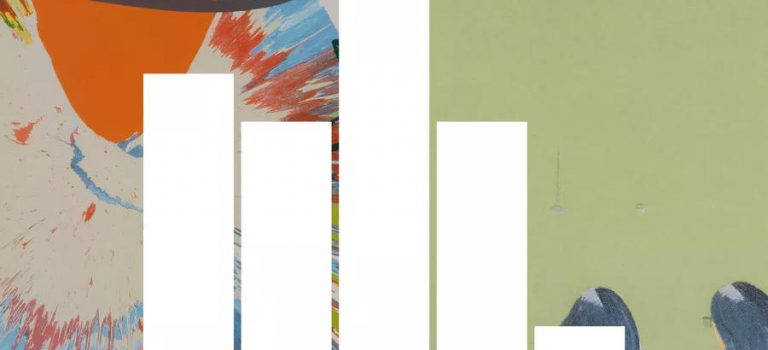Source: Artsy.
Welcome to The Art Industry Trends Report 2023, Artsy’s new research-driven report on the key issues impacting art galleries today. This year, we surveyed gallery professionals and dealers from 85 countries to ascertain the major factors affecting the art industry in 2023, from the art driving the most sales to the ways that art professionals are meeting new collectors.
Below, find the five key trends we gleaned from this year’s survey. To see our full analysis and data insights, download the full report here.
Last year was marked by the full return of the physical art world, as COVID-19 restrictions across the globe mostly ended for good. Despite the return of in-person fairs and events, the online sales practices that flourished during the pandemic remain an important source of revenue for galleries today. Plus, our survey’s respondents intend for online sales to be a primary source of growing sales in the future.
This increasingly hybrid art world, where in-person relationship-building goes hand in hand with online sales mechanisms, is a theme that recurred across our survey. It became clear that a balance between the physical and digital is key. For example, when asked to select any number of their most important marketing channels, more than 60% of respondents chose email newsletters, followed closely by gallery websites (58%), in-person events (57%), social media (43%), online art platforms (42%), and in-person fairs (39%).
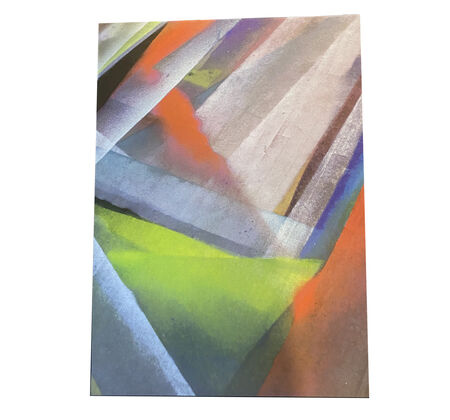
Tauba Auerbach
Untitled, 2011
Artsy

Frank Stella
Price on request
Secondary-market demand ranked second among those reasons for artwork price changes, reflecting collectors’ appetite for the limited supply of artworks by a finite number of trendy artists. Most respondents, our survey finds, view mid-career and ultra-contemporary artists (born on or after 1975) as most important to future sales, which chimes with a year of record- and estimate-smashing sales for these categories at auction. Abstract art—a genre that has made strides in the secondary market for prices realized last year—is also viewed by a majority of respondents as most important to sales.
Youth is another thread that runs throughout our report. We see a marked difference in the interests and strategies deployed by younger galleries (those in business for less than three years), which are connecting with younger collectors and artists to a higher degree than their more established peers. Older collectors, meanwhile, are viewed by respondents as a whole to be less important to future sales: Only 10% ranked collectors aged 55+ as most important to the future growth of their business
The Trends
1. Abstract paintings are most important to gallery sales.

Based on Artsy survey responses.
For 59% of respondents, non-figurative paintings (which includes abstract painting, as well as associated genres such as minimalist painting, spiritual abstraction, and neo–abstract expressionism) were selected as most important to their business now. In contrast, 45% of galleries ranked figurative painting highest.
2. Online sales are a key revenue driver for primary- and secondary-market galleries.
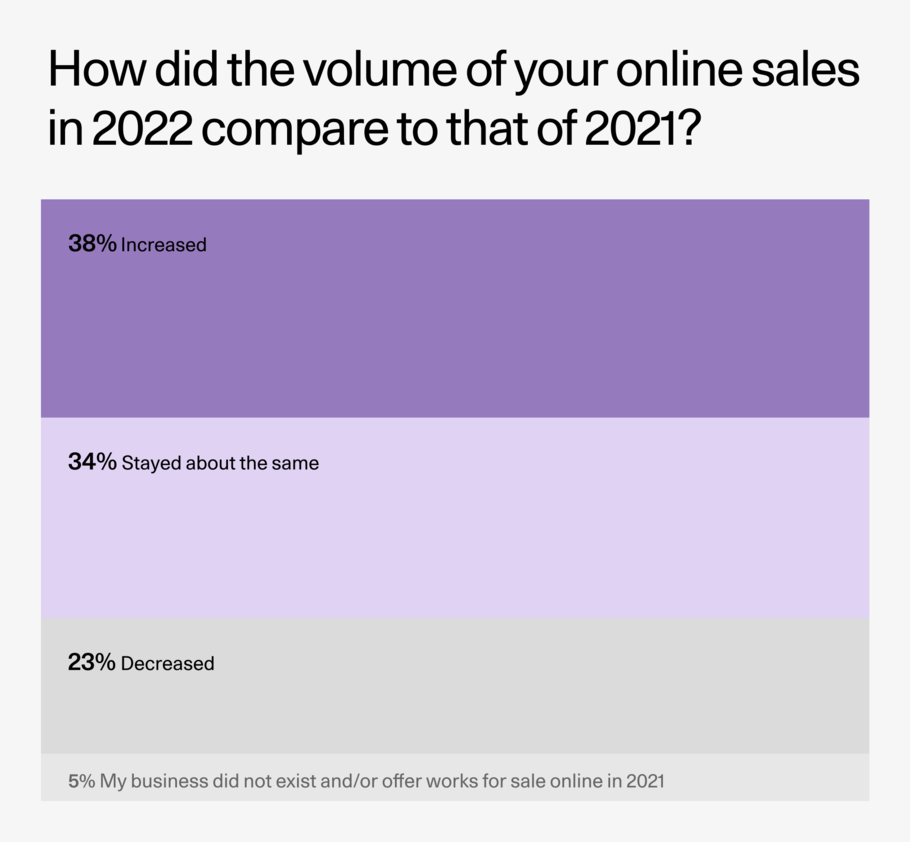
Based on Artsy survey responses.
Although the physical art world has largely returned to its pre-pandemic state—more than 300 art fairs took place in 2022, and international travel is largely unrestricted now—our survey of galleries this year shows that online sales are still growing or stable. This year, when asked about the volume of online sales in 2022 compared to 2021, the largest group of respondents (38%) said that their sales volume increased, while another 34% said it remained consistent.
3. Inflation has unexpectedly led galleries to increase artwork prices.
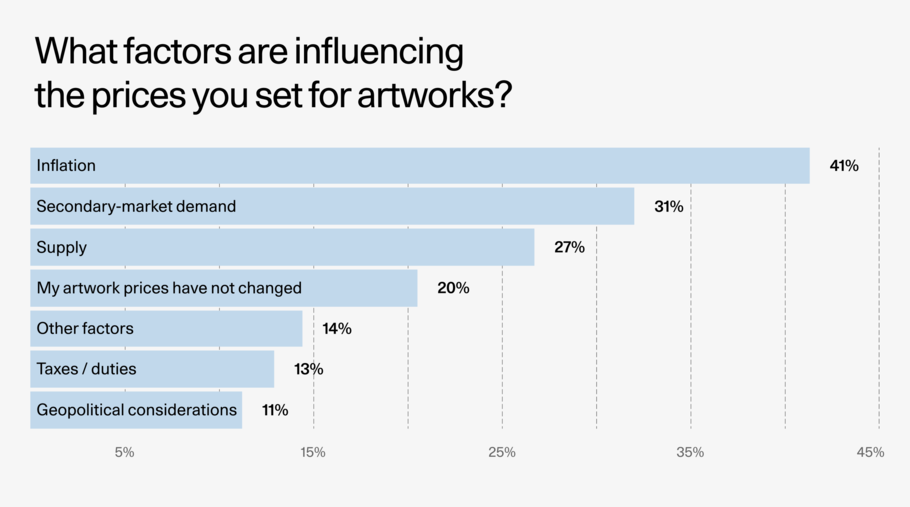
Based on Artsy survey responses.
Inflation was chosen as the most influential factor in setting art prices by 41% of respondents. This is not surprising, given that many businesses across industries have had to adjust their pricing strategies accordingly. However, many gallerists did not expect for inflation to directly impact artwork prices: In Artsy’s 2022 Gallery Insights Report, 44% of respondents stated that they did not intend to increase their artwork prices due to inflation.
4. Younger, social media–savvy galleries are charting their own path.
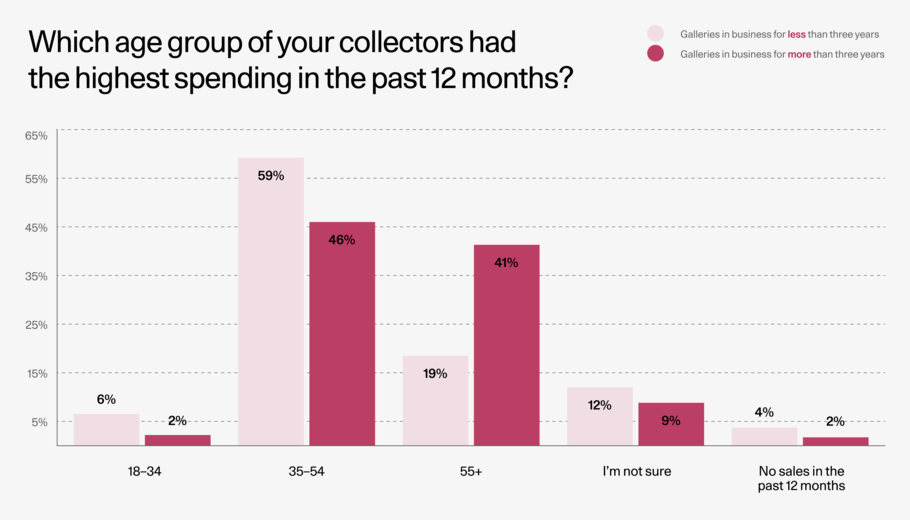
Based on Artsy survey responses.
Compared to their more established counterparts, galleries that have been in business for less than three years are selling a higher share of art to younger collectors, and reaching these collectors in different ways.
5. Most galleries are discovering new artists through other artists.
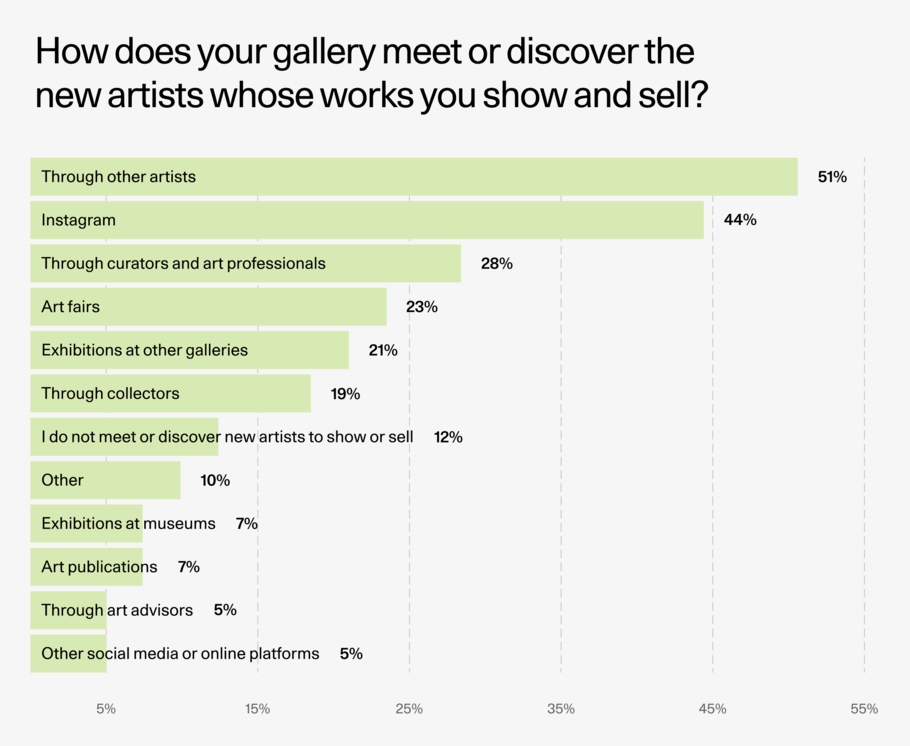
Based on Artsy survey responses.
For artists and gallerists, networking pays off: More than half (51%) of respondents discover the artists they go on to work with through other artists.
Methodology
The majority of participants (41%) are based in the U.S., followed by the U.K. (7%). Some 20% have been in business for less than three years, 38% have been in business for between three and 15 years, and 42% have been in business for more than 15 years. Some 70% of respondents have a permanent, physical location.
Thank you
Learn more about becoming an Artsy gallery partner through visiting partners.artsy.net.








